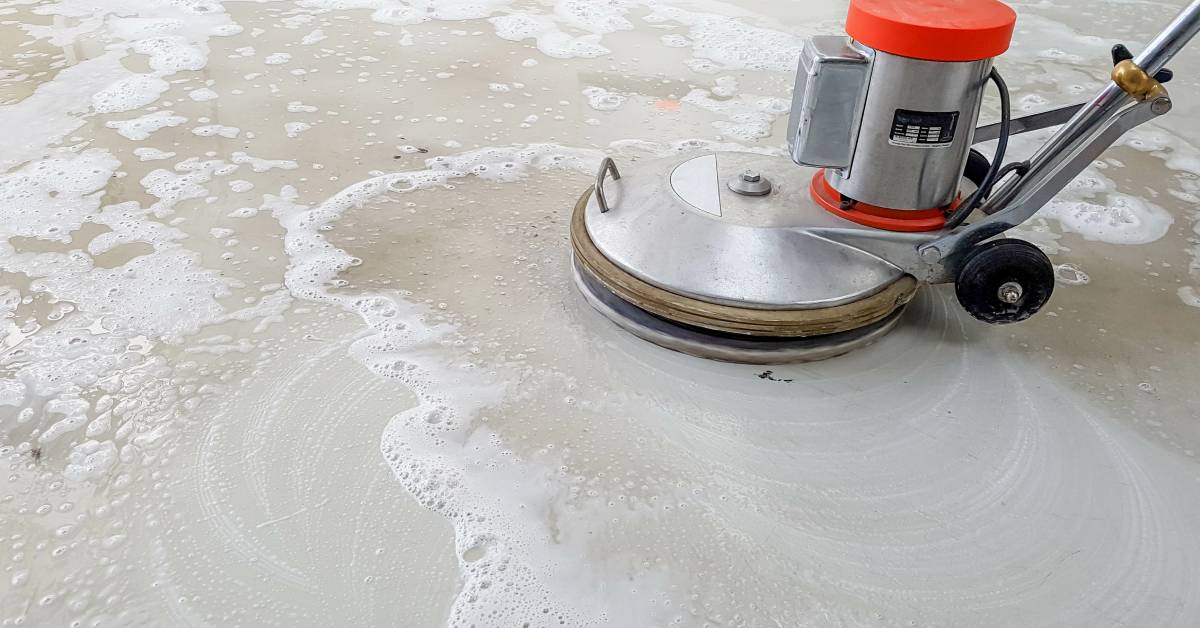The Importance of Cleanliness in Correctional Facilities
24th Jun 2024
Cleanliness in correctional facilities is fundamental to maintaining a safe and secure environment. Everything directly impacts the inmates’ and staff’s health, well-being, and behavior. Review this post to understand the importance of cleanliness in correctional facilities.
Disease Prevention
Germs and bacteria can quickly spread in an environment where individuals live in close quarters, leading to outbreaks of illnesses such as the flu, tuberculosis, and gastrointestinal infections. Regular cleaning and disinfecting of communal areas, cells, and restrooms are essential to minimize the risk of these diseases spreading. Effective sanitation practices, such as frequent handwashing and the use of personal protective equipment, further enhance disease control.
Inmate Safety
Cleanliness directly impacts inmate safety by reducing pest infestations and improving air quality. Unsanitary conditions can attract pests such as rodents and insects, which can carry diseases and pose significant health risks. Routine cleaning and proper waste management practices prevent these infestations, creating a safer living environment for inmates.
Additionally, maintaining clean air through regular ventilation and dust and mold removal is vital for respiratory health. Poor air quality can exacerbate existing health conditions and lead to new respiratory issues.
Staff Safety
Working in an unclean environment increases the risk of exposure to harmful pathogens and hazardous substances, potentially compromising staff health. Clean facilities reduce the likelihood of germ exposure, ensuring that staff can perform their duties without unnecessary health risks.
Furthermore, a clean environment contributes to better morale and job satisfaction among staff. Correctional officers and other employees are more productive when they feel safe. Therefore, maintaining high standards of cleanliness is not only beneficial for inmate health but also essential for protecting and supporting facility staff.

Compliance
Various laws and regulations mandate specific cleanliness standards for correctional facilities to ensure the health and safety of everyone. Failure to comply with cleanliness standards can lead to severe penalties, such as fines and legal action, damaging the facility’s reputation.
Regular inspections and audits focus on cleanliness as a key indicator of a facility’s overall management and operational effectiveness. Correctional facilities demonstrate their commitment to maintaining a humane environment by adhering to these regulations, avoiding legal repercussions, and fostering trust with oversight bodies and the public.
Human Rights
Cleanliness in correctional facilities is important because it’s an ethical obligation and a human right. Everyone, regardless of their circumstances, deserves to live in conditions that uphold their dignity and well-being. Unsanitary conditions can dehumanize inmates, exacerbating feelings of neglect and injustice.
Ensuring cleanliness is a fundamental aspect of treating individuals with respect and humanity. It reflects a commitment to their basic human rights and acknowledges their inherent value as individuals.
Public Perception
Public perception of the unsanitary conditions within these institutions can lead to outrage and a loss of confidence in the system’s ability to manage and rehabilitate inmates effectively. Conversely, clean and well-maintained facilities reflect positively on the correctional system, showcasing its commitment to inmate welfare and operational excellence.
This positive perception can foster greater public support for correctional initiatives and reforms. Moreover, transparency about cleanliness practices and improvements can build trust and demonstrate accountability to the community, highlighting the facility’s dedication to high standards and continuous improvement.
Rehabilitation
A clean environment supports rehabilitative efforts within correctional facilities. The physical state of the living environment can significantly impact inmates’ mental and emotional well-being. Clean and orderly surroundings can promote a sense of calm and stability, which is essential for rehabilitation.
Facilities that maintain high standards of cleanliness create a space conducive to learning, self-improvement, and positive behavior. Inmates are likelier to engage in educational and vocational programs, participate in therapy sessions, and adhere to facility rules.
Correctional facilities can enhance the effectiveness of rehabilitation programs by prioritizing cleanliness, ultimately aiding in the successful reintegration of inmates into society.
Best Practices for Maintaining Cleanliness
Maintaining cleanliness in correctional facilities requires a comprehensive approach that incorporates regular cleaning schedules, proper training, effective products and equipment, and inmate involvement. Implementing consistent cleaning routines is important. Regularly scheduled cleaning ensures that all areas within the facility remain hygienic and reduces the risk of disease outbreaks.
Establishing these routines maintains high standards and makes identifying and addressing potential problem areas before they escalate easier.
Right Product and Equipment Use
Using the right cleaning products and equipment is essential for achieving thorough cleanliness. Facilities should invest in high-quality, effective cleaning agents and tools that can handle the rigorous demands of a correctional environment.
For example, using diamond polishing pads for concrete floors can help maintain a spotless and durable flooring surface, which is essential in high-traffic areas of correctional facilities. Moreover, using HEPA-filtered vacuum cleaners can effectively remove dust and allergens from the air, contributing to better air quality. Ultimately, the right items can properly sanitize facilities, reducing the risk of health hazards.

Proper Staff Training
Providing staff with proper training on cleaning techniques and hygiene practices creates a knowledgeable and capable team that can effectively manage sanitation. Training programs should cover the correct use of cleaning products and safety precautions.
They can also include guidance on personal protective equipment (PPE) usage, infection control procedures, and handling hazardous materials. Well-trained staff can maintain a clean environment, which is critical for the health and safety of everyone in the facility.
Challenges and Overcoming Them
Maintaining cleanliness in correctional facilities poses unique challenges, including limited resources and high occupancy rates. Here are some strategies to overcome these challenges:
- • Efficient Resource Management: Allocate resources wisely to areas that need the most attention. It’s also important to prioritize high-traffic zones and hygiene-prone spots.
- • Regular Inspections: Conduct regular inspections to promptly identify and address hygiene issues. Use inspection results to refine and improve cleaning protocols.
- • Innovative Solutions: Partner with external cleaning services for deep-cleaning tasks during peak times or staff shortages.
Future Trends and Developments
Looking ahead, correctional facilities will increasingly adopt eco-friendly cleaning products, reducing their environmental impact while keeping high sanitation standards. Automation will play a larger role in cleaning processes, with robotic cleaners and automated dispensing systems streamlining tasks and cutting labor costs.
Advanced sanitation technologies, such as UV-C light sanitizers and electrostatic sprayers, will provide more effective disinfection, ensuring thorough cleanliness with less manual effort. These innovations promise to make maintaining high cleanliness standards easier and more sustainable, transforming the way correctional facilities manage hygiene.
Conclusion
Cleanliness in correctional facilities is critical for ensuring the health, safety, and well-being of inmates and staff. Facilities can maintain high standards of hygiene by adhering to best practices. Ultimately, these efforts create a safer and healthier environment and contribute to the overall rehabilitation process by fostering a sense of responsibility and pride among individuals.

